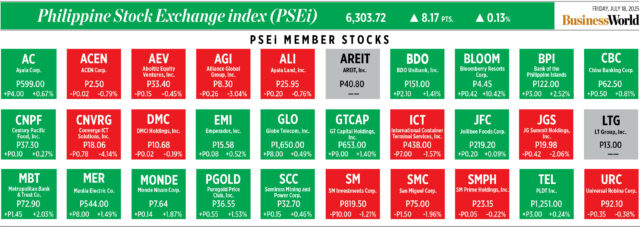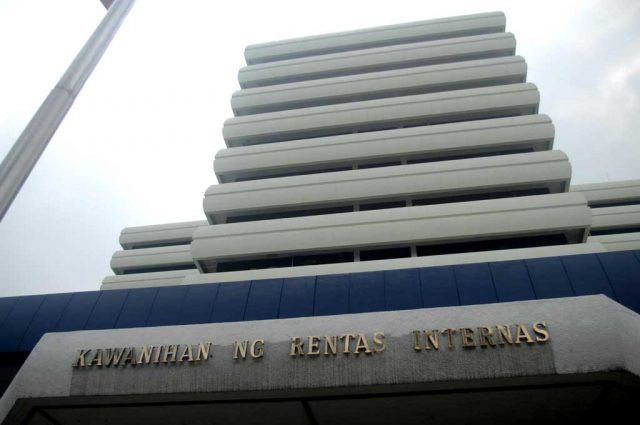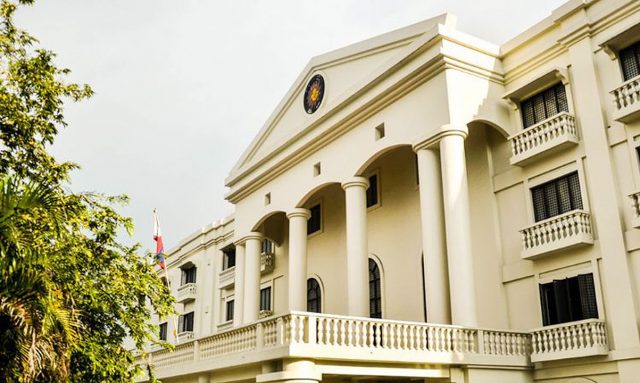Peso may move sideways amid trade concerns
THE PESO could move sideways against the dollar this week as the market awaits developments in the United States’ negotiations with its trading partners regarding its planned import tariffs.
On Friday, the local unit rebounded after a four-day losing streak as it closed at P57.145 per dollar, strengthening by 14.5 centavos from its P57.29 finish on Thursday, data from the Bankers Association of the Philippines showed.
Week on week, however, the peso was down by 67.5 centavos from its P56.47 close on July 11.
The local unit rose on Friday on profit taking before the weekend, a trader said in a phone interview.
The market was also cautious as players looked ahead to the US Federal Reserve’s policy meeting on July 29-30 and the Trump’s administration’s Aug. 1 tariff negotiation deadline, the trader added.
Market optimism before President Ferdinand R. Marcos, Jr.’s scheduled trip to the US this week to negotiate the Philippines’ 20% tariff rate also supported the peso, Rizal Commercial Banking Corp. Chief Economist Michael L. Ricafort said in a Viber message.
The dollar also corrected slightly on Friday, which led to the peso’s rise, Mr. Ricafort added.
For this week, the peso may continue to move sideways as investors await developments related to the US’ tariff policies, the trader said.
The trader sees the peso moving between P56.80 and P57.30 per dollar this week, while Mr. Ricafort said it could range from P56.90 to P57.40.
The US dollar slipped against the euro on Friday but held on to weekly gains, as investors weighed expected Federal Reserve policy amid signs that tariffs may be starting to increase some inflation pressures and as US President Donald J. Trump continued to criticize Chair Jerome H. Powell, Reuters reported.
Data on Tuesday showed that consumer prices rose in June, though the increase was seen as moderate. Wednesday’s producer price inflation report showed that prices were steady last month.
Mr. Powell has said he expects inflation to rise this summer as a result of Mr. Trump’s tariff policies. His comments have pushed out expectations of when the US central bank is likely to cut interest rates.
But the labor market is showing signs of weakness even as headline job gains and the unemployment rate remain relatively solid.
Fed Governor Chris Waller said on Friday that he favors a rate cut at the July meeting because he feels tariffs are likely to have a limited impact on inflation. Mr. Waller added that underlying data “are not indicating a super healthy private sector labor market,” and the Fed should “get ahead” of a possible hiring slowdown.
Mr. Powell is facing almost daily criticism from Mr. Trump over the Fed’s reluctance to cut rates. The dollar tumbled on Wednesday on reports that Mr. Trump was planning to fire the Fed chair, but rebounded after Mr. Trump denied the reports. Mr. Powell’s term will end in May.
Fed funds futures traders are pricing in 46 basis points (bps) of cuts by yearend, implying that two 25-bp cuts are seen as most likely, with the first coming in September.
The dollar index was roughly flat on the day at 98.49, and was on track for a 0.65% weekly gain.
The euro was last up 0.22% at $1.1621 but was headed for a weekly drop of 0.59%.
The euro pared gains after the Financial Times reported that Mr. Trump is pushing for a minimum tariff of 15% to 20% in any deal with the European Union.
The Japanese yen was slightly lower against the greenback heading into Sunday’s upper house election. The dollar gained 0.1% to 148.75 yen and was on track for a weekly gain of 0.93%. — Aaron Michael C. Sy with Reuters














